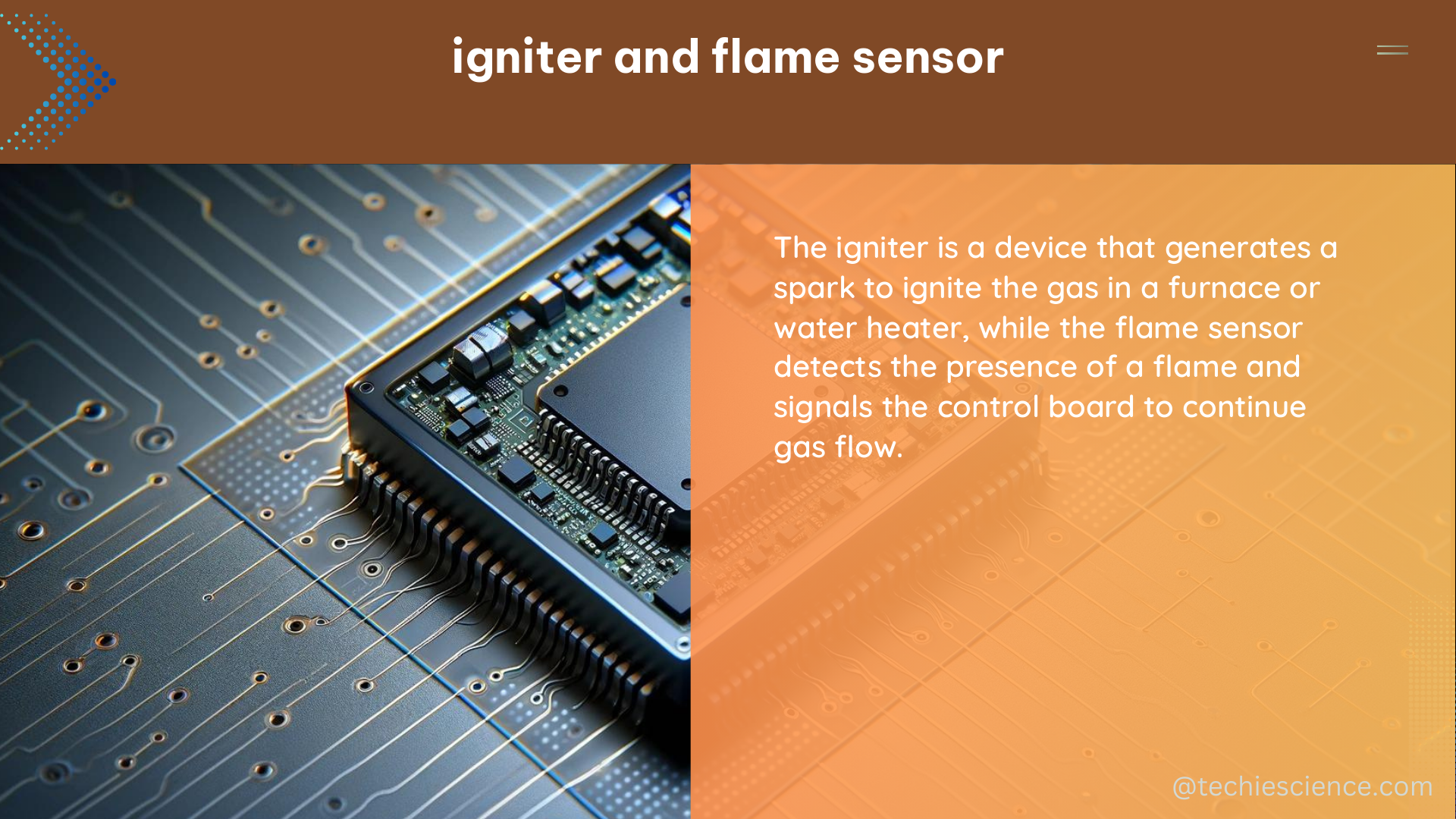The igniter and flame sensor are critical components in various systems, including gas turbine engines and aircraft powerplants, where they ensure reliable ignition and monitoring of the combustion process. These components are subject to rigorous calibration, integration with sensor data, and risk assessments to ensure their proper functioning and safety.
Understanding the Igniter
The igniter is responsible for initiating combustion in gas turbine engines. Its performance is characterized by its ability to generate sufficient heat to ignite the fuel-air mixture. The igniter’s design and operation are crucial in ensuring reliable ignition, especially in micro gas turbine engines, where the small size and low thrust produced by these engines make the ignition process more challenging.
Igniter Design and Specifications
- Igniter Type: Spark plug, glow plug, or plasma igniter
- Igniter Material: Typically made of nickel-chromium alloy or platinum
- Igniter Voltage: Typically ranges from 10,000 to 40,000 volts
- Igniter Current: Typically ranges from 0.5 to 2.0 amps
- Igniter Spark Duration: Typically ranges from 0.5 to 5.0 milliseconds
- Igniter Spark Energy: Typically ranges from 0.5 to 5.0 joules
Igniter Performance Characteristics
- Ignition Delay Time: The time between the igniter activation and the first appearance of a stable flame
- Ignition Reliability: The probability of successful ignition under various operating conditions
- Ignition Limits: The range of fuel-air ratios and other parameters within which reliable ignition can be achieved
A study investigating the combustion characteristics of micro gas turbine engines under varied fuel supply conditions highlights the importance of understanding the ignition process in these engines, where the igniter’s performance is critical due to the small size and low thrust produced.
Understanding the Flame Sensor

The flame sensor is responsible for monitoring the presence of a flame in gas turbine engines and aircraft powerplants. Its performance is evaluated based on its ability to accurately detect the presence or absence of a flame.
Flame Sensor Design and Specifications
- Flame Sensor Type: Thermocouple, photodiode, or ionization probe
- Flame Sensor Material: Typically made of high-temperature materials such as ceramics or refractory metals
- Flame Sensor Sensitivity: Typically ranges from 10 to 100 millivolts per degree Celsius (for thermocouples) or 0.1 to 1.0 microamps per lumen (for photodiodes)
- Flame Sensor Response Time: Typically ranges from 10 to 100 milliseconds
Flame Sensor Performance Characteristics
- Flame Detection Accuracy: The ability to accurately detect the presence or absence of a flame
- Flame Detection Reliability: The probability of successful flame detection under various operating conditions
- Flame Detection Limits: The range of operating conditions (e.g., fuel-air ratio, pressure, temperature) within which the flame sensor can reliably detect the flame
In the case of aircraft powerplants, each sensor, including the igniter and flame sensor, is individually calibrated, and the calibration data is stored in the controller software. This ensures that all measured data is properly calibrated, enhancing the overall trustworthiness of the cyber-physical-human (CPH) systems.
Flame Sensor’s Role in Flameout Detection
The flame sensor’s role is particularly important in detecting flameout conditions in aircraft engines. The flame sensor, in conjunction with other sensors such as N2 (compressor speed) and EGT (exhaust gas temperature), is used to detect flameout conditions, which are classified into restartable and non-restartable categories.
Flameout Conditions and Risk Assessment
- Restartable Flameout: A condition where the engine can be restarted without significant risk or damage
- Non-restartable Flameout: A condition where the engine cannot be restarted without significant risk or damage
The risk assessment associated with these flameout conditions is crucial in ensuring the safe operation of the engine. This assessment takes into account factors such as the engine’s operating parameters, the severity of the flameout, and the potential consequences of a failed restart.
Calibration and Integration of Igniter and Flame Sensor
To ensure the reliable operation of the igniter and flame sensor, they undergo rigorous calibration and integration with other sensor data. This process involves the following steps:
- Individual Sensor Calibration: Each sensor is calibrated separately to ensure that its measurements are accurate and consistent.
- Sensor Data Integration: The calibrated sensor data is integrated into the engine control system, allowing for real-time monitoring and decision-making.
- Sensor Data Validation: The integrated sensor data is continuously validated to ensure that it remains accurate and reliable over the engine’s lifetime.
By following these steps, the overall trustworthiness of the CPH systems is enhanced, ensuring the safe and reliable operation of the engine.
Conclusion
The igniter and flame sensor play vital roles in ensuring reliable ignition and monitoring of the combustion process in various systems, including gas turbine engines and aircraft powerplants. Their performance is characterized by measurable and quantifiable data, including calibration data, sensor technology, and risk assessments, which contribute to the overall trustworthiness and safety of the systems in which they are employed.
References:
- Federal Register. (2021). Standards of Performance for New, Reconstructed, and Modified Sources and Emissions Guidelines for the Oil and Natural Gas Sector Climate Review. Retrieved from https://www.federalregister.gov/documents/2021/11/15/2021-24202/standards-of-performance-for-new-reconstructed-and-modified-sources-and-emissions-guidelines-for
- AIAA SCITECH 2024 Forum. (2024). A Study of Combustion Characteristics in Afterburner for Micro Gas Turbine Engine Under Varied Fuel Supply Conditions. Retrieved from https://arc.aiaa.org/doi/book/10.2514/MSCITECH24
- Advanced Control Systems for Aircraft Powerplants. (2005). Retrieved from https://apps.dtic.mil/sti/tr/pdf/ADA084845.pdf
- Indications of Propulsion System Malfunctions—Sustained Thrust … (2006). Retrieved from https://www.tc.faa.gov/its/worldpac/techrpt/ar0615.pdf

The lambdageeks.com Core SME Team is a group of experienced subject matter experts from diverse scientific and technical fields including Physics, Chemistry, Technology,Electronics & Electrical Engineering, Automotive, Mechanical Engineering. Our team collaborates to create high-quality, well-researched articles on a wide range of science and technology topics for the lambdageeks.com website.
All Our Senior SME are having more than 7 Years of experience in the respective fields . They are either Working Industry Professionals or assocaited With different Universities. Refer Our Authors Page to get to know About our Core SMEs.